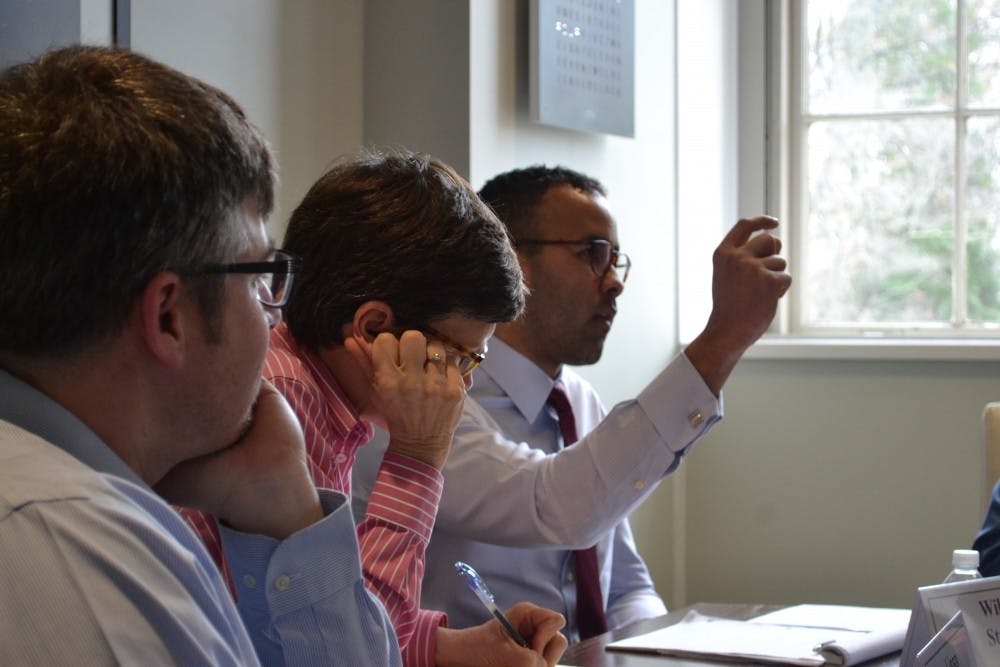The Faculty Athletics Committee met Tuesday afternoon. Here is what you need to know:
The committee tackled a recent report showing the University’s poor performance in graduating Black student-athletes.
Shaun R. Harper, the executive director of the Race and Equity Center at the University of Southern California, published the 2018 version of his study of the success of Black male athletes at Division 1 schools. In it he ranked the Graduation Success Rate, as calculated by the NCAA, of Black male athletes at 65 schools. UNC is ranked 56th with a GSR of 56 percent for its Black male athletes.
Vince Ille, senior associate athletic director at UNC, said the issue was not tied to admissions.
“The NCAA keeps its IPP data, the keep track of the incoming student athletes at each Division 1 school and they’ll give you the institution’s test scores and core GPA,” Ille said. “We did an evaluation of our institution against U.S. News and World Report top eight public universities … No matter what group of schools we compared to, we were either better, or we compared favorably.”
Chris Faison, the coordinator for Men of Color Engagement at the Center for Student Academic Counseling, said the issue stems from the culture of the institution.
“As Vince said, what we get in is not the issue. It’s the culture at this institution,” he said. “It’s not one office; it’s not one department. It is the fact that, as the author goes on to say, the caricature and the over stereotyping of black male athletes is the issue. And until this group or any group acknowledges that, we will always be at the bottom.”
The committee discussed possible future steps to address the causes for the low graduation rates. Suggestions included focus groups and surveys with athletes to determine what they thought about the culture of the institution.
Athletic Director Bubba Cunningham pointed out that there was no data on why athletes failed to graduate, or how close they were to graduating. Faison said the important thing was that something needed to be done.



